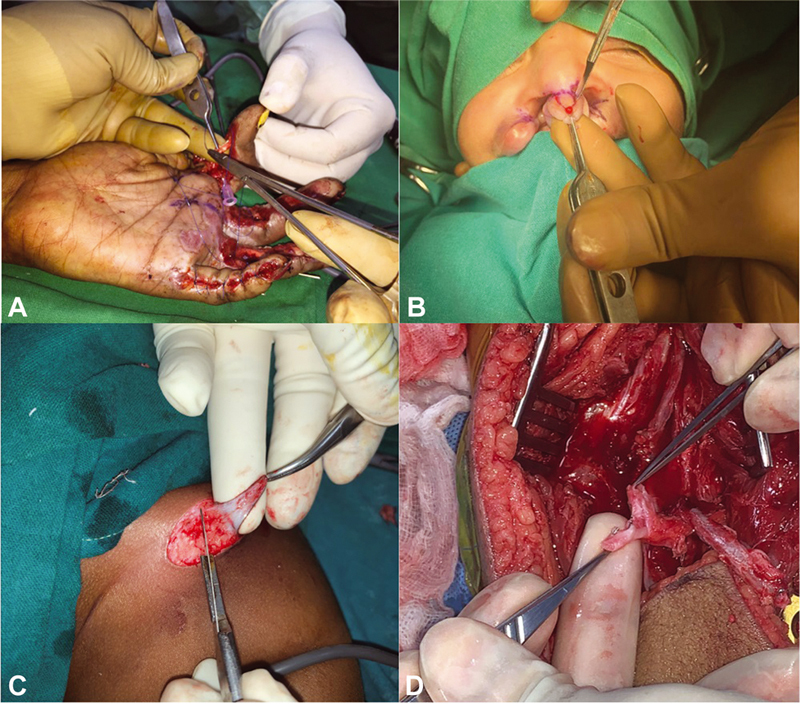The fourth finger of the left hand, believed to possess a vein that runs securely to the heart, has traditionally been ringed. This Vein of Love, or more amorously called the Vena Amoris, 1 originated in ancient Egypt, where it was first described by Macrobius in 395–423 AD.
All of us have at some time or the other faced difficulty in stabilizing a structure while repair. Dr. Graham Lister 2 first described the usage of the ring finger of the nondominant hand in facilitating tendon repairs, wherein he suggested that the tendon should be held by the forceps and supported by the ring finger of the hand holding the forceps. Although a simple technique, it was found to be very effective in stabilizing the tendon, thereby enabling an easier and faster repair.
In this musing, the author describes how the usage of this Apollo finger, when extrapolated to other procedures, rather lends a great helping hand to the operating surgeon. These included the following as shown in Fig. 1 :
Fig. 1.

( A ) Tendon stabilization—zone II repair. ( B ) Prolabial support. ( C ) full-thickness skin graft (FTSG) harvest. ( D ) Stabilization during microvascular anastomosis.
Skin suturing, especially when taking subcuticular/subdermal stitches.
Harvesting full thickness graft.
Prolabial support in bilateral cleft lip repair, enabling a precise incision.
Tendon repair stitches (as originally described by Lister).
Stabilization of structures during microsurgery such as vascular and pedicle preparation.
This method helps one enforce correct suture placement, demonstrate better performance during vascular anastomoses, and reduce the unnecessary handling of critical structures like tendons, nerves and arteries, thereby minimizing the need for additional assistance. These tiny tricks help a great deal when operating in smaller setups with less assistance available. This finding is critical, as it aids not just the novice but also the proficient. An effortless modification to simplify several complex operations; therefore, renaming the “ Anamika ,” the nameless ring finger, to the plastic surgeon's power finger.
Footnotes
Conflict of Interest None declared.
References
- 1.Kunz G F. J. B. Lippincott Company; 1917. Rings for the Finger: From the Earliest Known Times To The Present, with Full Descriptions of The Origin, Early Making, Materials, The Archaeology, History, For Affection, For Love, For Engagement, For Wedding, Commemorative, Mourning, etc; pp. 193–194. [Google Scholar]
- 2.Lister G D. Philadelphia, PA: W.B. Saunders Company; 1990. Flexor tendon; p. 4532. [Google Scholar]


